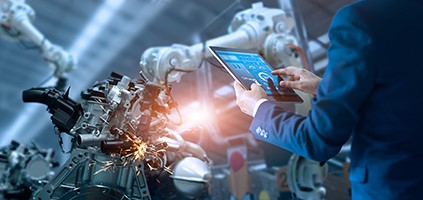Increased customer demand can be a challenge. While it is a good problem to have, there are still hurdles to overcome.

Focusing on processes that enable you to be fast, smart and efficient can help overcome the challenge of growing customer demand. However, even with this in place, there are still variables that can slow down operation time, such as employee turnover and ramp up time.
Augmented Reality (AR) provides a solution to some of these variables. For example, AR offers a more efficient way to train employees, utilising their time in a way that can keep the factory operating at its optimum level of efficiency. Outlined below are the three ways that AR will help manufacturers meet growing customer demand.
Faster ramp-up time for new employees
When customer demand increases, it's almost inevitable that you'll need to hire more employees. In an environment where safety is paramount, onboarding employees is often time-consuming. AR is an effective training tool, by facilitating on-the-job training through interactive, 3D experiences.Reduce errors on the production line
Even with modern manufacturing processes, problems still occur due to human error.
In particular, where employees are using new equipment, they are more likely to make mistakes. Simple errors can result in quality issues and the time to resolve these will slow down product shipments, making it difficult to meet orders and customer demand. AR can provide step-by-step instructions to improve accuracy and confidence when using new machinery. By overlaying digital information onto a physical object, employees have an improved understanding of assembly instructions and therefore minimise inaccuracies that result in defects, re-work, and scrap.
Quicker maintenance and repair times
Maintenance and repair tasks can also have a significant impact on the production line output, so it’s crucial to minimise any downtime. However, when maintenance and repairs are needed, technicians will often waste valuable time interpreting instructions, which is both time and labour intensive. Printed instructions can be hard to interpret, with technicians requiring supplementary information to understand instructions in context with the machinery.
Instructions supported by AR have the ability to both show and tell workers exact steps by providing hands-free animations and guidance during time-sensitive maintenance and repairs. This approach can significantly reduce the time to interpret instructions. Overall, AR minimises the duration, severity, and cost of demanding downtime situations.
